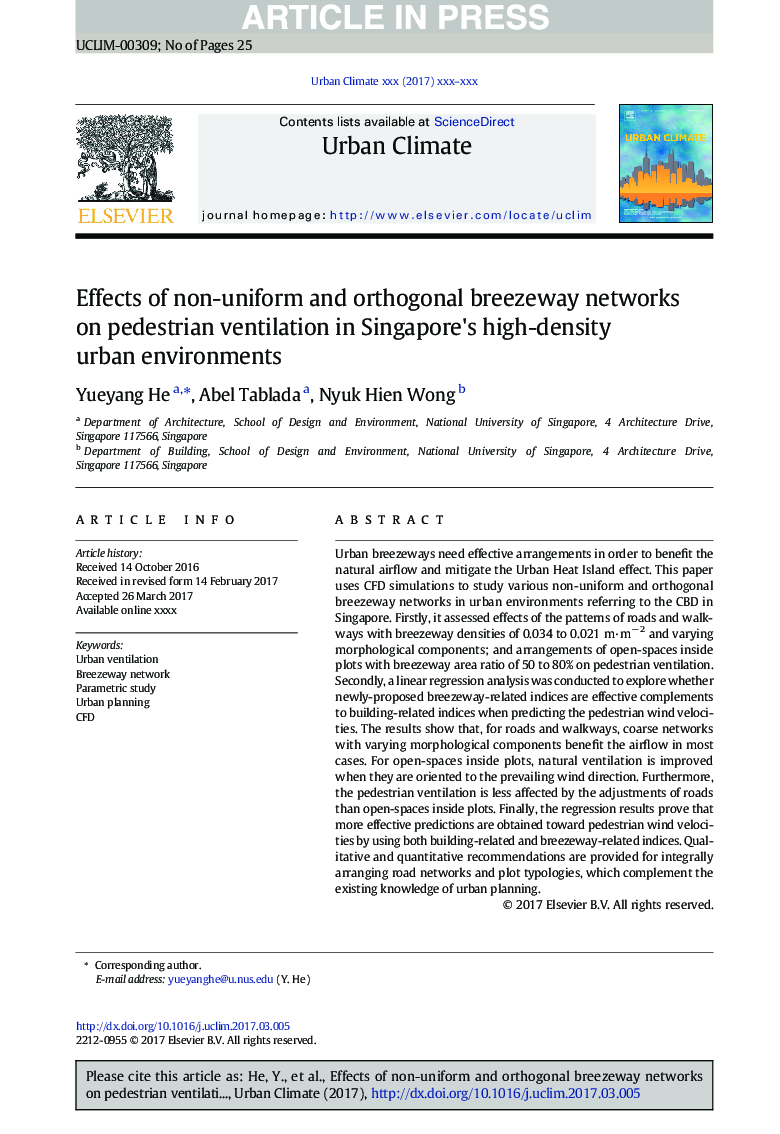| Article ID | Journal | Published Year | Pages | File Type |
|---|---|---|---|---|
| 6576886 | Urban Climate | 2018 | 25 Pages |
Abstract
Urban breezeways need effective arrangements in order to benefit the natural airflow and mitigate the Urban Heat Island effect. This paper uses CFD simulations to study various non-uniform and orthogonal breezeway networks in urban environments referring to the CBD in Singapore. Firstly, it assessed effects of the patterns of roads and walkways with breezeway densities of 0.034 to 0.021 m·mâ 2 and varying morphological components; and arrangements of open-spaces inside plots with breezeway area ratio of 50 to 80% on pedestrian ventilation. Secondly, a linear regression analysis was conducted to explore whether newly-proposed breezeway-related indices are effective complements to building-related indices when predicting the pedestrian wind velocities. The results show that, for roads and walkways, coarse networks with varying morphological components benefit the airflow in most cases. For open-spaces inside plots, natural ventilation is improved when they are oriented to the prevailing wind direction. Furthermore, the pedestrian ventilation is less affected by the adjustments of roads than open-spaces inside plots. Finally, the regression results prove that more effective predictions are obtained toward pedestrian wind velocities by using both building-related and breezeway-related indices. Qualitative and quantitative recommendations are provided for integrally arranging road networks and plot typologies, which complement the existing knowledge of urban planning.
Related Topics
Physical Sciences and Engineering
Earth and Planetary Sciences
Earth and Planetary Sciences (General)
Authors
Yueyang He, Abel Tablada, Nyuk Hien Wong,
